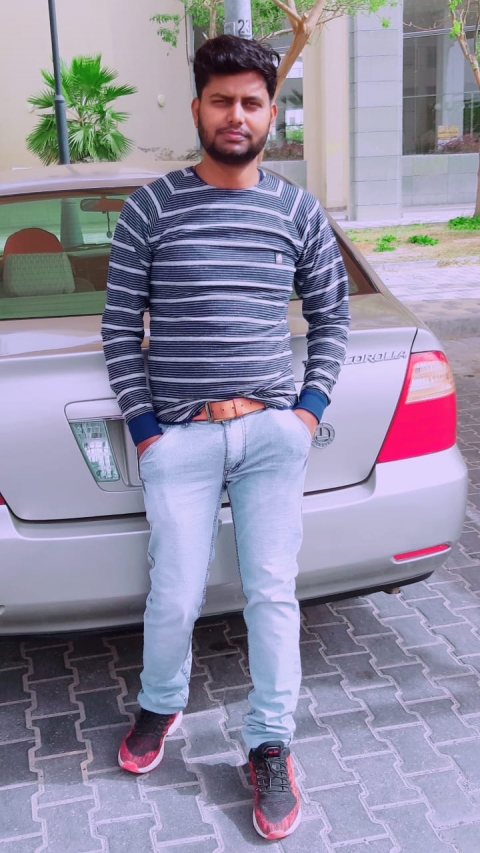- Chandigarh UT
- Creative Corner
- Dadra Nagar Haveli UT
- Daman and Diu U.T.
- Department of Administrative Reforms and Public Grievances
- Department of Biotechnology
- Department of Commerce
- Department of Consumer Affairs
- Department of Industrial Policy and Promotion (DIPP)
- Department of Posts
- Department of Science and Technology
- Department of Telecom
- Digital India
- Economic Affairs
- Ek Bharat Shreshtha Bharat
- Energy Conservation
- Expenditure Management Commission
- Food Security
- Gandhi@150
- Girl Child Education
- Government Advertisements
- Green India
- Incredible India!
- India Textiles
- Indian Railways
- Indian Space Research Organisation - ISRO
- Job Creation
- LiFE-21 Day Challenge
- Mann Ki Baat
- Manual Scavenging-Free India
- Ministry for Development of North Eastern Region
- Ministry of Agriculture and Farmers Welfare
- Ministry of Chemicals and Fertilizers
- Ministry of Civil Aviation
- Ministry of Coal
- Ministry of Corporate Affairs
- Ministry of Culture
- Ministry of Defence
- Ministry of Earth Sciences
- Ministry of Education
- Ministry of Electronics and Information Technology
- Ministry of Environment, Forest and Climate Change
- Ministry of External Affairs
- Ministry of Finance
- Ministry of Health and Family Welfare
- Ministry of Home Affairs
- Ministry of Housing and Urban Affairs
- Ministry of Information and Broadcasting
- Ministry of Jal Shakti
- Ministry of Law and Justice
- Ministry of Micro, Small and Medium Enterprises (MSME)
- Ministry of Petroleum and Natural Gas
- Ministry of Power
- Ministry of Social Justice and Empowerment
- Ministry of Statistics and Programme Implementation
- Ministry of Steel
- Ministry of Women and Child Development
- MyGov Move - Volunteer
- New Education Policy
- New India Championship
- NITI Aayog
- NRIs for India’s Growth
- Open Forum
- PM Live Events
- Revenue and GST
- Rural Development
- Saansad Adarsh Gram Yojana
- Sakriya Panchayat
- Skill Development
- Smart Cities
- Sporty India
- Swachh Bharat (Clean India)
- Tribal Development
- Watershed Management
- Youth for Nation-Building
Inviting comments and suggestions on the Draft Accessibility Standards for the Built Environment Sector

Start Date :
Jun 23, 2025
Last Date :
Jul 07, 2025
17:45 PM IST (GMT +5.30 Hrs)
The Department of Empowerment of Persons with Disabilities (DEPwD), Ministry of Social Justice & Empowerment (MSJE), in collaboration with MyGov, invites comments and suggestions ...
All Comments
Featured
New Comments
 Comments (1)
Comments (1)
 Comments (2)
Comments (2)
 Comments (2)
Comments (2)
 Comments (1)
Comments (1)
 Comments (1)
Comments (1)
 Comments (1)
Comments (1)

 Comments (1)
Comments (1)
 Comments (1)
Comments (1)
 Comments (1)
Comments (1)

Showing 245 Submission(s)
HARSHAL JAIN
5 months 5 days ago
The draft Accessibility Standards for the Built Environment is a commendable step toward inclusive infrastructure. I urge integration of clear, enforceable design norms—such as tactile paths, automatic doors, dual-height handrails, accessible restrooms, and smart lifts with Braille and audio cues. Uniform national implementation, third-party audits, and regular updates are essential. Training for architects and integration with Smart City platforms will enhance execution. Emergency evacuation provisions and active involvement of persons with disabilities in planning are crucial. Accessibility must be a right, not an option. I applaud this initiative and hope the final standards promote dignity, independence, and universal access for all.
Like
(2)
Dislike
(0)
Reply
Report Spam
sapna dhama
5 months 5 days ago
Make buildings easy for everyone to use. Add ramps, handrails, wide walkways, and clean, accessible toilets. use braille signs and voice features in lifts. keep special parking spots near entrances. add alarms with sound and light. connect well with public transport. check buildings regularly to make sure they follow these rules.
Like
(2)
Dislike
(0)
Reply
Report Spam
RidimaParshar
5 months 5 days ago
to built a good environment sector cleaning is must but just by cleaning garbage will not work as it cant be done everytime but on every road everyday it should be groomed then we can anaylise that which is the most garbage thrown and where if it near a shop or smthng dustbin should be enrolled there and also the major problem. i see today is men peeing in public this is so disgusting to. se where ever we go on any road there are men peeing in side corners theh should be fined fo doing so evern on the wall of govt toilet they are peeing as if they camt go in and do it is so yuck to see i just hate this the most in india
Like
(2)
Dislike
(0)
Reply
Report Spam
Nabomita Ghosh
5 months 5 days ago
we need to stop construction of buildings in small area, it spoil with boundary and small play area. Instead we should promote township concept with proper planning to balance environment and building, where there will be more green.
A single township can be given to multiple contractor to build apartment as per plan and budget.
Like
(3)
Dislike
(0)
Reply
Report Spam
Nabomita Ghosh
5 months 5 days ago
Sir,
We need to develop and promote microbiology sector, which will automatically clear garbage. Since there are microbes that eat water and soil garbage, and finally can plant tree to transfer to green
Like
(3)
Dislike
(0)
Reply
Report Spam
Amit kumar kanaujia
5 months 6 days ago
Subject: Suggestion on Draft Accessibility Standards – Request for Inclusion of Therapy and Support Infrastructure for Children with Cerebral Palsy (CP)
Respected Sir/Madam,
I am a concerned parent of a child with Cerebral Palsy (CP). My daughter is going to be 3 years old, and she has been diagnosed with CP. This condition requires long-term therapy, medical care, and emotional support. However, the resources available for children like her are extremely limited and unaffordable for most families.
In India, there are countless children suffering from Cerebral Palsy and other similar disabilities, but the recovery and improvement rate is very low – not because treatment is impossible, but because access to therapy, medical facilities, and financial support is missing or highly expensive.
I request the government to kindly consider the following suggestions while finalizing the Draft Accessibility Standards for the Built Environment Sector:
please find an attachment
mygov_175165858668451471.pdf
Like
(2)
Dislike
(0)
Reply
Report Spam
SmitaShet
5 months 6 days ago
NBC-2016 - DEVELOPMENT CONTROL RULES AND GENERAL BUILDING REQUIRMENTS : B-9.1g) The provision of the accessible toilets shall
be such that any wheelchair user/ambulant
disabled person doesnt have to travel more
than 30 m on the same floor. - All toilets for disabled persons is attached with a toilet block( which has Male and female toilets) as per NBC -2016. It is practically not possible to provide toilet blocks at every 30m on any commercial building layout and hence not possible to provide a HC toilet at every 30m. This provisioning has not been seen globally or locally and needs to be understood clearly as it will have very big design impact which is not possible to implement. Request that this should be looked into and not considered as non-negotiable.

Like
(2)
Dislike
(0)
Reply
Report Spam
Vaishnavi Rawat
5 months 6 days ago
Public Invitation for Comments on the Draft Accessibility Standard for the Built Environment Sector
By Vaishnavi Rawat
Accessibility is not just a legal mandate; it is a moral and social obligation. In today’s evolving society, the need for universally accessible built environments has become more critical than ever. Buildings, public spaces, and infrastructure must be designed in a way that everyone—regardless of age, ability, or condition—can use them independently, safely, and with dignity.
In light of this, we are pleased to announce the release of the Draft Accessibility Standard for the Built Environment Sector. This draft is now open for public review and feedback. As the coordinator of this initiative, I, Vaishnavi Rawat, invite citizens, experts, organizations, and institutions to review the draft and share their valuable suggestions and observations.
This document aims to establish a comprehensive framework that will guide the planning, design, construction & maintenance.
Like
(2)
Dislike
(0)
Reply
Report Spam
PRAKASHNARAYANANDHARE
5 months 6 days ago
Stair case climbing wheelchairs must be mandatorily provided at all upper floors, not provided with lifts, aisle steps in all audiotoriums, picture halls and sport stadiums, as these steps are excluded from accesdibility due to large number of steps, requiring impracticaly long ramps, in all such buildings across India.
This is a serrious lacuna in providing accessibility across uper floors with no lifts and deployment of stair case climbing wheelchair could be safe, cimfortable remedy to address this lacuna.
Hence provision of stair case climbing wheelchair, must be made in all such stair cases, not provided with lifts, mandatory.
Like
(2)
Dislike
(0)
Reply
Report Spam
BrahmDevYadav
5 months 6 days ago
How to write accessibility requirements?
1. Accessibility acceptance criteria should identify risks and needs.
2. Describe the outcome, not the solution.
3. When writing about accessibility, be specific.
4. Add new criteria and change our criteria frequently.
5. Involve every member of our team, not just developers.
Like
(1)
Dislike
(0)
Reply
Report Spam
- View More

